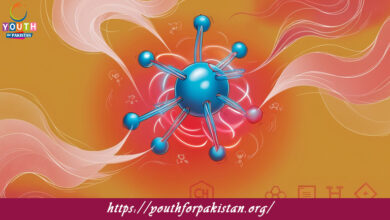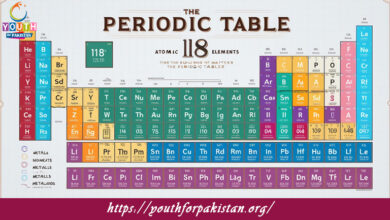Proteins MDCAT Quiz with Answers

Proteins MDCAT Quiz; Proteins are large molecules composed of amino acids and are required for many functions in living organisms. They are involved in nearly every cellular process, from enzyme catalysis to cell signaling and structural support. Understanding proteins, their structure, and their functions is one of the most crucial topics in the MDCAT preparation for both biology and chemistry sections.
Structure of Proteins:
Proteins are polymers composed of amino acids linked by peptide bonds. The structure of a protein is arranged into four levels:
Primary Structure: The sequence of amino acids in the polypeptide chain. This sequence determines the unique properties and function of the protein.
Secondary Structure: The polypeptide chain folds into structures such as alpha-helices and beta-pleated sheets. This folding is stabilized by hydrogen bonds.
Tertiary Structure: The three-dimensional arrangement of the protein, important for its function. This is stabilized by interactions such as hydrophobic interactions, ionic bonds, and disulfide bridges.
Quaternary Structure: The assembly of multiple polypeptide chains into a functional protein complex. For instance, haemoglobin is a protein with quaternary structure, comprising four subunits.
Functions of Proteins:
Proteins have a wide variety of functions in biological systems. Some key functions include:
Enzymatic Catalysis: Proteins serve as enzymes, which catalyze biochemical reactions by lowering the activation energy required for the reaction. For example, amylase is an enzyme that breaks down starch into sugars.
Structural Support: Proteins can provide structural support to cells and tissues. For example, collagen is a structural protein of connective tissues, skin, and bones.
Transport: Proteins like hemoglobin are responsible for transporting molecules like oxygen throughout the body.
Regulation and Signaling: Hormonal proteins, such as insulin, control metabolic processes, while receptor proteins on cell membranes are involved in signal transduction.
Immunity: Antibodies are proteins that play a key role in immune defense by recognizing and neutralizing foreign substances, such as bacteria and viruses.
Enzyme-Substrate Interaction:
Another of the most essential roles that proteins play is their involvement in enzyme-catalyzed reactions. The enzymes have an active site to which a substrate binds, forming an enzyme-substrate complex. This interaction enables the conversion of substrates into products. In the induced fit model, the enzyme slightly changes its shape upon the binding of the substrate to facilitate the reaction more effectively.
Example:
Amylase is an enzyme wherein its active site binds the starch molecules to break them into simpler sugars.
De-naturation:
Denaturation is the process in which a protein loses its three-dimensional structure due to external factors such as high temperature, extreme pH, or chemical agents. Denaturation causes proteins to lose their functionality, since the specific shape is required for their biological activity. For instance, when an egg is cooked, the albumin protein denatures, changing from a liquid to a solid.
Example:
Denaturation of enzymes by heat may make them inactive, which is vital in procedures such as cooking or sterilization.
Quiz: Test Your Knowledge of Proteins
Our MDCAT Quiz on proteins will test your understanding of their structure, function, and importance in biological processes. The quiz includes questions on the four levels of protein structure, mechanisms of enzymes, and roles that proteins play in metabolism and immunity.
Free Flashcard: Key Insights on Proteins
The Free Flashcard set on proteins will help reinforce your understanding of key concepts, including protein structure, enzyme-substrate interaction, and protein denaturation. Use these flashcards for efficient study and to ensure you’re well-prepared for related questions in the MDCAT exam.
Experience the real exam environment with our expertly designed collection of over 25,000 MCQs MDCAT Mock Tests.






